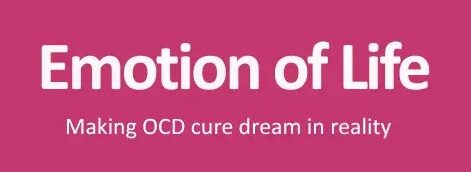Exposure Response Prevention therapy for OCD is the leading behavioral treatment for obsessive-compulsive disorder and related anxiety problems. ERP helps people confront triggers while intentionally avoiding rituals so anxiety naturally reduces and life can be re-engaged.
What is Exposure Response Prevention Therapy for OCDERP)?
Exposure Response Prevention Therapy for OCD (ERP for OCD) involves helping individuals confront the thoughts, images, sensations, or situations that provoke anxiety (the exposures) while intentionally avoiding the rituals or safety behaviours that normally reduce that anxiety (the response prevention). With consistent practice, anxiety decreases naturally, feared outcomes rarely occur, and the person learns that thoughts are not commands — leading to lasting symptom relief.
How Exposure Response Prevention Therapy for OCD (ERP for OCD) begins: Compassionate education
The ERP process often begins with compassionate psychoeducation for clients and families: explaining how avoidance and rituals perpetuate OCD, normalizing shame, and building motivation. When caregivers understand ERP’s rationale they become active collaborators in treatment — essential because most meaningful change happens during homework practice outside sessions.
Principles that guide Exposure Response Prevention Therapy for OCD (ERP for OCD)
ERP is grounded in clear, evidence-based principles that shape every intervention:
- Habituation & inhibitory learning: Repeated safe exposure without rituals reduces the nervous system’s threat response and creates new learning that feared stimuli are not dangerous.
- Response prevention: Exposures must be paired with refraining from compulsions. Performing rituals reinforces the cycle.
- Gradual, repeated practice: Small, manageable trials over time are more effective than single large “flooding” events.
- Variation & unpredictability: Mixing contexts and triggers prevents narrow, context-bound learning and strengthens generalization.
- Collaboration & education: ERP empowers clients to understand the process and actively co-create the exposure hierarchy and homework.
Therapeutic stance: curiosity over combat
ERP reframes anxiety as a feeling to be noticed and tolerated rather than an enemy to be defeated. Therapists emphasize curiosity and experimentation, treating exposures as small tests of prediction rather than pass/fail measures of bravery. This reduces catastrophic thinking and increases engagement.
Specific ERP techniques
Exposure Response Prevention Therapy for OCD (ERP for OCD) uses a range of tailored techniques depending on the person’s age, presentation, and context:
Exposure formats
- Imaginal exposure: Used when feared stimuli are mental or can’t be accessed physically (e.g., intrusive harm thoughts). Clients repeatedly describe or imagine the feared scenario while avoiding neutralizing thoughts or actions.
- In vivo exposure: Direct contact with real-world triggers (e.g., touching a doorknob, using public transport, handling avoided objects).
- Interoceptive exposure: Intentionally inducing physical sensations (e.g., controlled hyperventilation, spinning) so clients learn sensations are uncomfortable but not dangerous.
Response prevention methods
- Behavioral response prevention: Avoiding observable rituals (not checking locks, not washing repeatedly, not repeating phrases).
- Cognitive response prevention: Resisting mental rituals (e.g., mentally reviewing events or counting).
- Stimulus control: Temporarily modifying the environment to reduce temptation while skills are built (e.g., moving mirrors or removing checking tools).
- Planned exposures & ritual interruption: Systematically reintroducing triggers and employing brief contradictory actions to interrupt automatic compulsions.
Other techniques
- Uncertainty tolerance exercises: Intentionally making small reversible “mistakes” (e.g., sending an imperfect email) to learn that uncertainty is survivable.
- Behavioral experiments: Predicting outcomes before exposure and comparing predictions to actual results to reinforce corrective learning.
Step-by-step Exposure Response Prevention Therapy for OCD (ERP for OCD) program
A typical ERP program follows an evidence-based sequence but is personalised to each client:
- Assessment & psychoeducation: Detailed symptom mapping, safety screening, and explanation of how rituals maintain OCD. For children, families and schools are included and practical barriers are addressed.
- Hierarchy creation: A collaboratively built “fear ladder” lists feared thoughts/situations from least to most distressing. Items are rated for distress to guide order and pacing.
- Guided exposure practice: In-session exposures begin with lower difficulty tasks to teach response prevention and coping skills (breathing, grounding, mindfulness).
- Homework: Daily, structured exposure assignments are essential. Success is measured by functional gains and decreased ritual frequency rather than zero anxiety.
- Weekly review & progression: Therapists review homework, troubleshoot, and increase complexity and unpredictability of tasks to generalize learning to real-world settings.
- Maintenance & relapse prevention: Booster exposures, early warning sign plans, and brief “top-ups” help preserve gains. Parents are coached to support practice without accommodating rituals.
Customising ERP across ages & presentations
ERP must be adapted to the client’s developmental level and symptom profile:
- Young children: Use play, parental coaching, and brief in-session activities to teach waiting and tolerance (e.g., leaving a toy slightly out of place).
- Adolescents: Exposures may target social fears (e.g., missing a minor event) paired with cognitive work to reframe catastrophic social beliefs.
- Adults with intrusive thoughts: Combine imaginal exposure with strict mental response prevention and avoid reassurance-seeking.
- Interoceptive fears: Gradual induction of sensations (dizziness, palpitations) in a safe way to reduce fear of bodily sensations.
- Family-focused ERP: Train caregivers to resist accommodating compulsions and to provide structured, non-reassuring support for homework.
Addressing challenges & boosting engagement
ERP can be demanding. Therapists increase engagement by pacing tasks, using motivational interviewing, tying exposures to meaningful goals, and adding creative methods (virtual reality, role play, games) — especially helpful for children and reluctant clients.
How does ERP therapy for OCD work?
What are the main steps of ERP treatment?
Is Exposure Response Prevention Therapy for OCD effective for children?
Is ERP only for OCD?
How long until Exposure Response Prevention Therapy for OCD shows results?
Conclusion Exposure Response Prevention Therapy for OCD
Exposure Response Prevention is a methodical, research-backed approach that empowers people to reclaim life from anxiety and rituals. It’s not always quick or easy, but when delivered with skill, empathy, and careful planning it produces durable, meaningful change. ERP helps people choose values, relationships, and activities over the confined safety of rituals.
If you are considering ERP for yourself or someone in your care, seek expert guidance. At Emotion of Life, Mr. Shyam Gupta leads a collaborative ERP approach that emphasizes real-world practice and family involvement.
Note: ERP should be provided by trained professionals. If there are safety concerns (e.g., suicidal ideation, imminent risk, severe medical issues), immediate crisis care should be sought.


